The ideal racket should match your skill level, playing style, and physical abilities. Understanding key features like weight, balance, flexibility, and grip size will help elevate your game.

Badminton is a sport that requires speed, precision, and control. To help you improve your game, choosing the right racket is essential. Not all rackets are the same—different players have different needs based on their style and experience. This guide breaks down the important factors to consider when selecting a badminton racket.
Understanding Racket Weight and Its Impact
The weight of your badminton racket plays a crucial role in how it handles. A racket that’s too light or too heavy can affect your speed, power, and control. Generally, badminton rackets weigh between 80 to 100 grams, but the best choice depends on your playing style.

Lightweight rackets (80-85g) are easy to maneuver and are ideal for players who rely on speed and quick reactions. These rackets allow for fast wrist movements, making them perfect for defensive players who want to control the shuttle with precision.
Medium-weight rackets (85-90g) offer a good balance of power and control. They are suitable for intermediate players who want a versatile racket that can perform well in both offensive and defensive situations.
Heavy rackets (90g and above) provide more power, making them a good option for players who want to generate strength, particularly for smashes and clears. However, heavier rackets require more strength to maneuver and are generally better suited for advanced players.
The Importance of Racket Balance: Power vs. Control
Racket balance refers to how the weight is distributed along the length of the racket. This affects how the racket feels when playing, especially when performing different types of shots. There are three primary balance types to consider: head-heavy, head-light, and even balance.
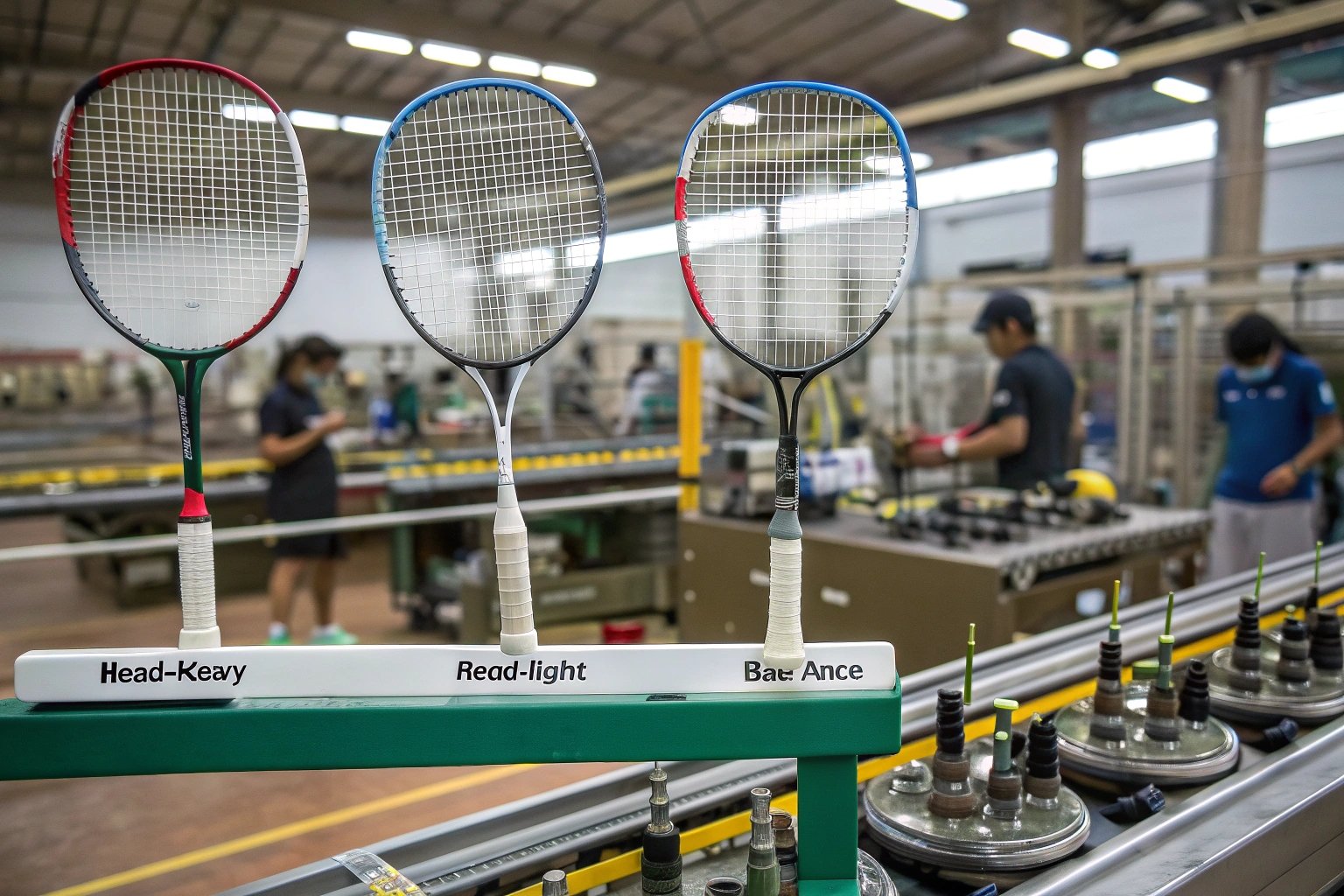
Head-heavy rackets offer more power, especially on smashes and clears. The extra weight in the head provides additional momentum, making it easier to generate power. These rackets are suited for aggressive players who focus on attacking shots.
Head-light rackets are lighter in the head, making them easier to maneuver. This design is ideal for players who prefer a quick reaction and more control, especially when playing at the net or when focusing on defense.
Even balance rackets strike a middle ground between power and control. These rackets are versatile and suitable for all-around players who need a mix of both offensive and defensive capabilities.
Flexibility: Finding the Right Shaft for You
The flexibility of the shaft influences the power and control you get from your shots. A more flexible racket allows the shaft to bend on impact, generating more power through a “trampoline” effect. A stiffer shaft provides more control but requires more effort to generate power.
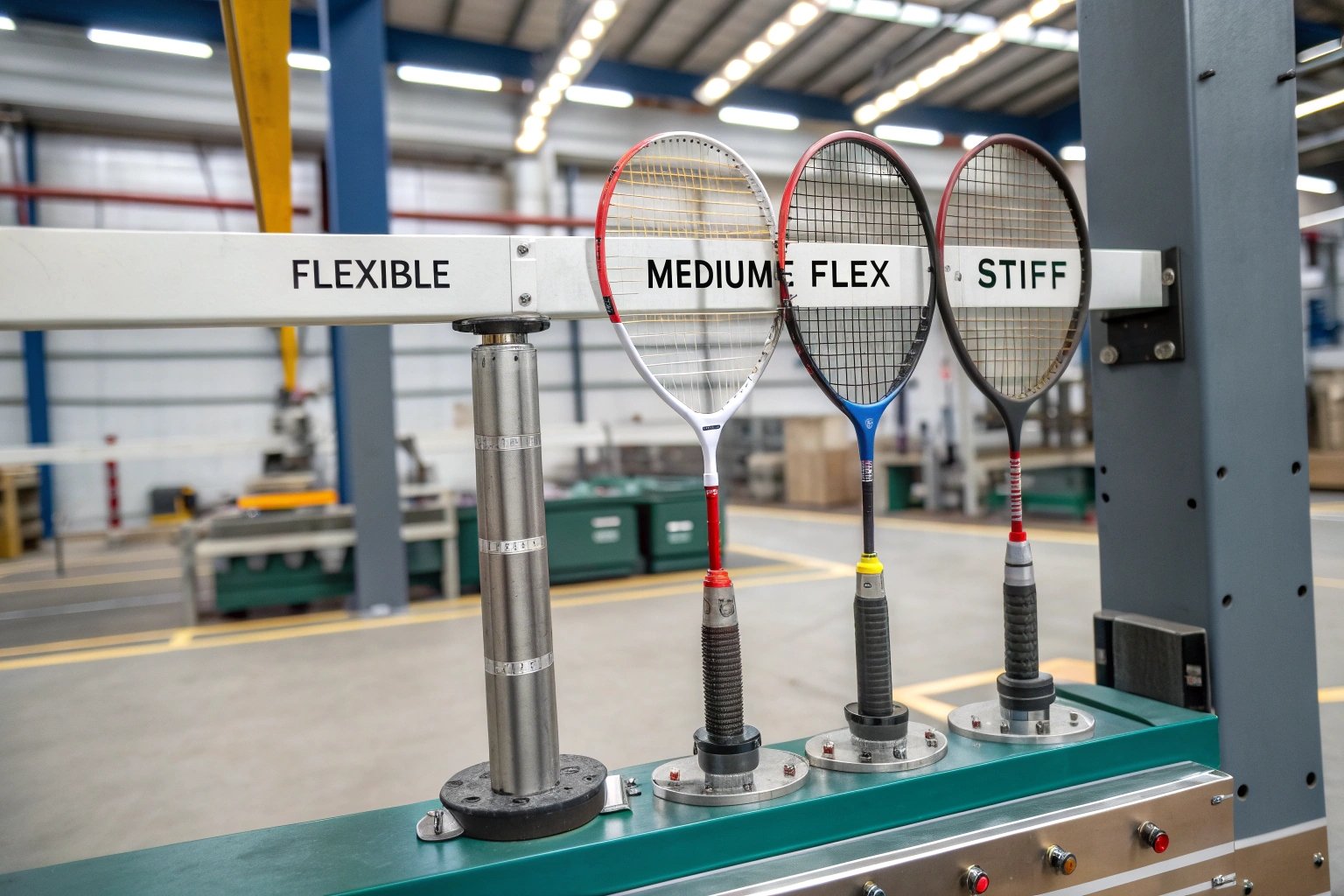
Flexible rackets are good for beginners or players who need help generating power. They provide a greater “trampoline” effect, which helps hit the shuttle with more force. However, they can compromise control and precision.
Medium-flex rackets offer a balance between power and control, making them suitable for intermediate players who want versatility in their shots.
Stiff rackets provide the most control and precision, making them ideal for advanced players who already have the strength and technique to generate power. These rackets are excellent for controlling the shuttle and placing shots accurately.
Choosing the Right Grip Size
The grip size is an often-overlooked but essential factor in racket performance. A grip that is too small or too large can cause discomfort, reduce control, and increase the risk of injury.
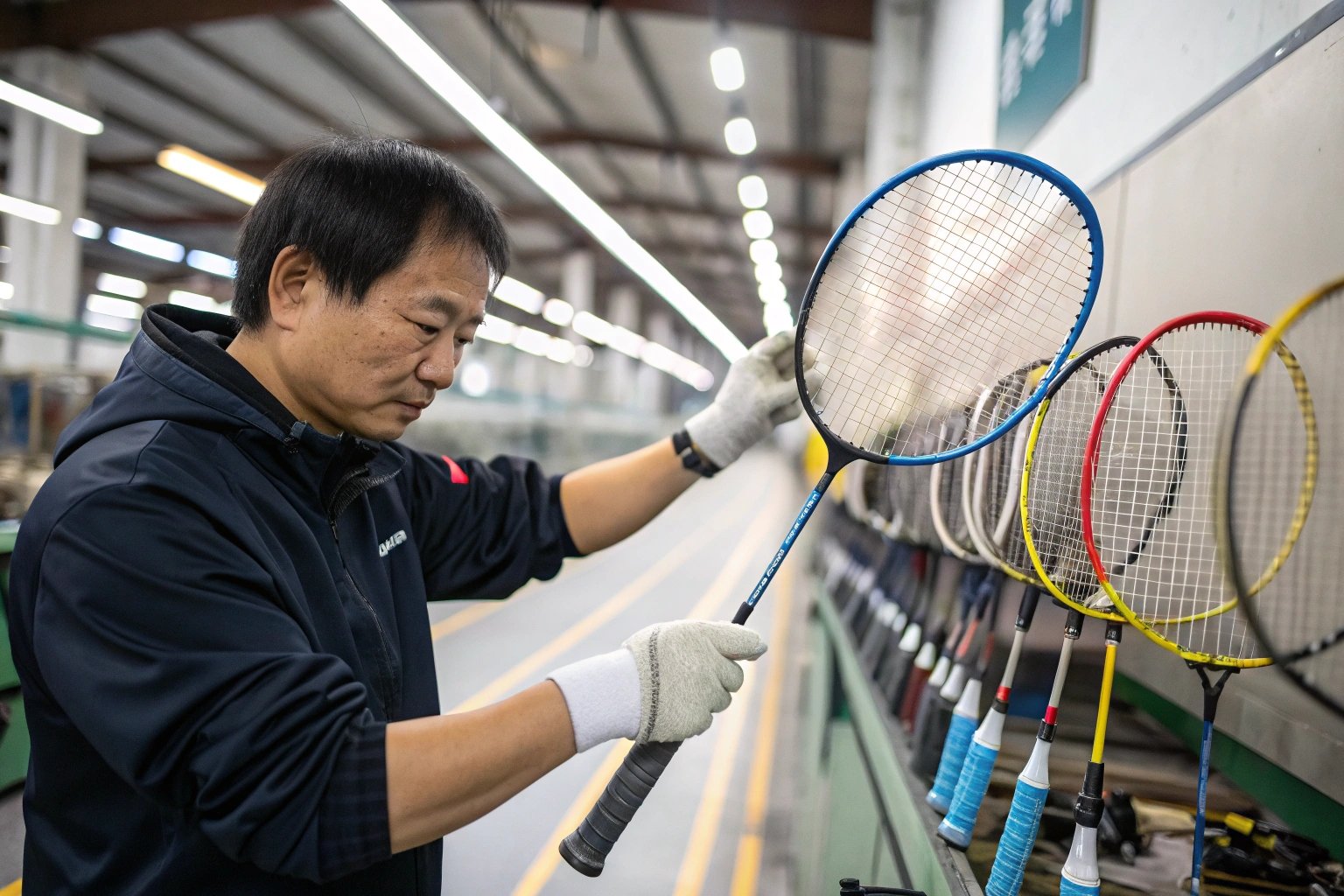
To determine your ideal grip size, hold the racket with your index finger and thumb to form a "V" shape, ensuring that your fingers are wrapped comfortably around the handle without being too tight. If you feel your fingers touch your palm, the grip size is likely too small. On the other hand, a grip that’s too large can limit wrist movement, reducing your ability to generate spin and control the shuttle effectively.
Grip sizes typically range from G1 (smallest) to G5 (largest), and it’s important to choose one that fits your hand comfortably. If you’re between sizes, a smaller grip size can always be adjusted with an overgrip.
String Tension: Power vs. Control
String tension is one of the most important aspects of a badminton racket that influences its performance. The tension of the strings determines how the shuttle reacts when it contacts the strings.
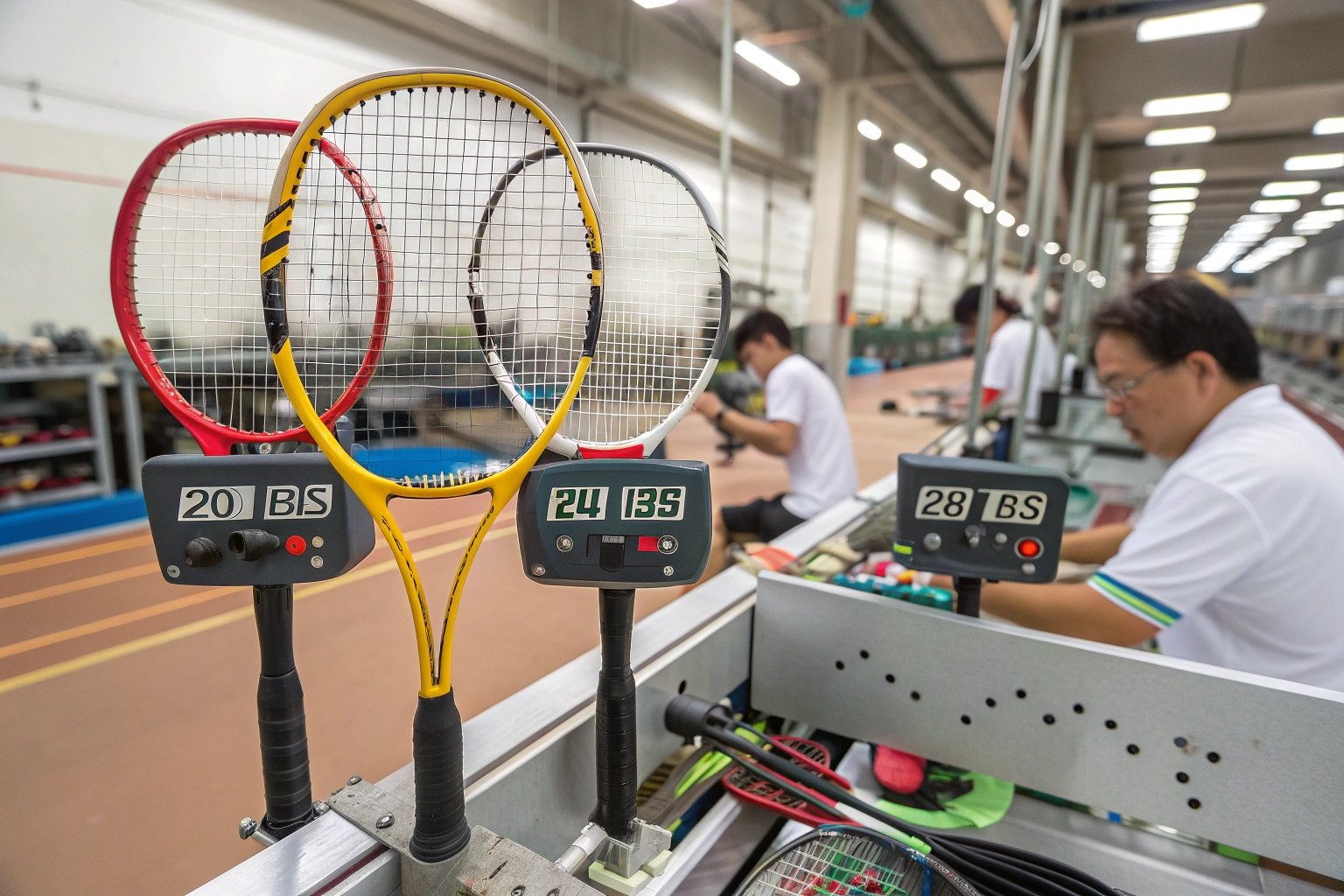
Higher string tension (28-30 lbs) provides more control and accuracy but reduces power. It’s ideal for advanced players who want precision and control over their shots.
Lower string tension (20-24 lbs) offers more power by creating a larger sweet spot and increasing the trampoline effect. This tension is better suited for beginners or players who rely on generating power with their shots.
Medium string tension (24-28 lbs) strikes a balance between power and control, making it suitable for intermediate players who want a versatile setup.
Frame Material: Durability and Performance
The material of the racket frame is crucial for both durability and performance. Modern badminton rackets are usually made from materials like graphite, carbon fiber, or a combination of both. These materials are lightweight yet strong, offering the perfect balance of power, control, and flexibility.
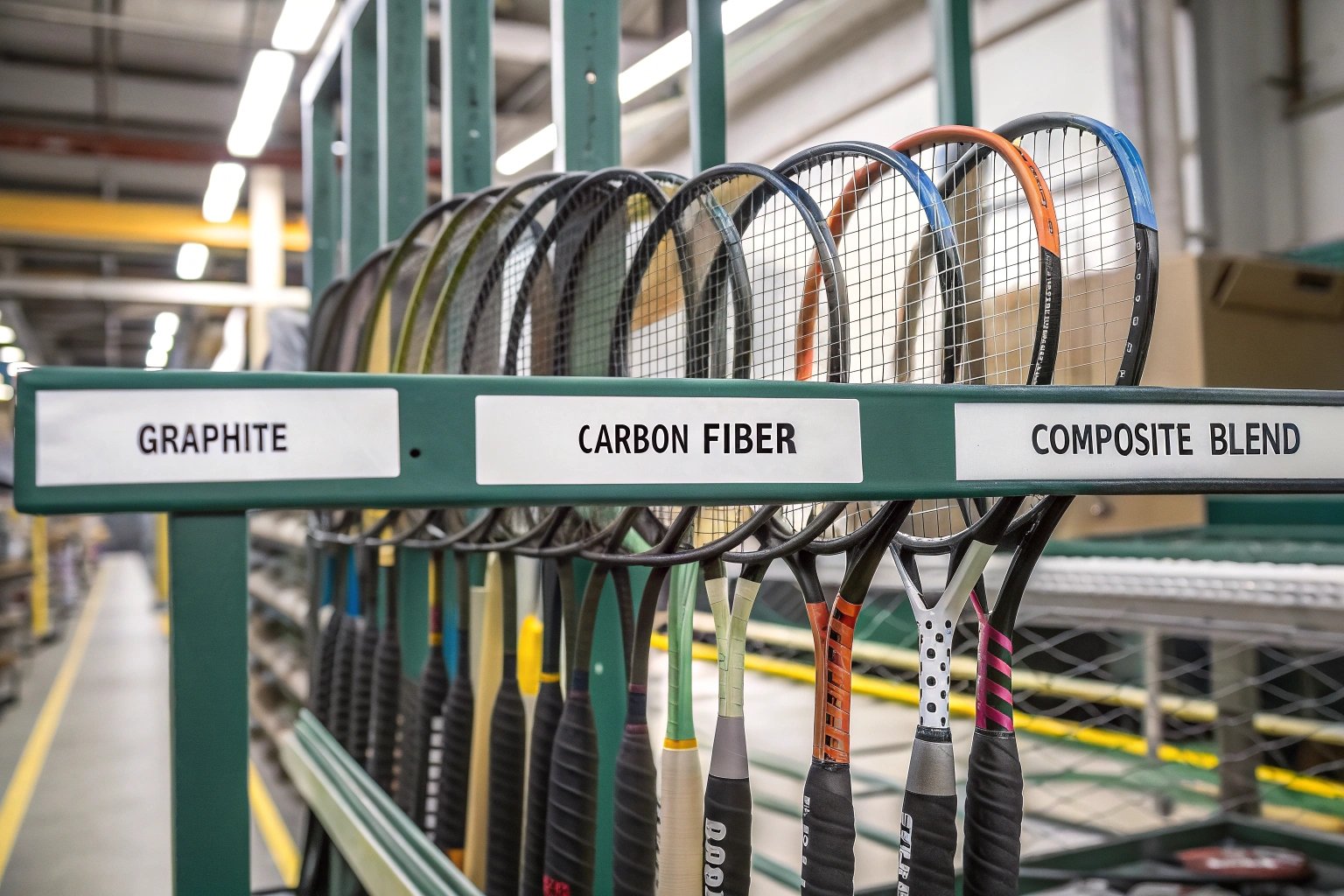
Graphite is the most common material used in high-quality rackets because it’s strong, lightweight, and offers excellent shock absorption. Carbon fiber is often used in premium rackets, providing a high strength-to-weight ratio for ultimate performance.
While some lower-end rackets may use aluminum, it’s generally heavier and less responsive than graphite or carbon fiber. Aluminum rackets are more affordable but offer less performance compared to premium options.
Conclusion
Choosing the right badminton racket is essential for improving your game. Whether you're a beginner looking for ease and comfort or an advanced player seeking power and control, selecting a racket that aligns with your skill level and playing style will significantly impact your performance. Consider factors like weight, balance, shaft flexibility, grip size, and string tension to find a racket that helps you elevate your game to the next level.